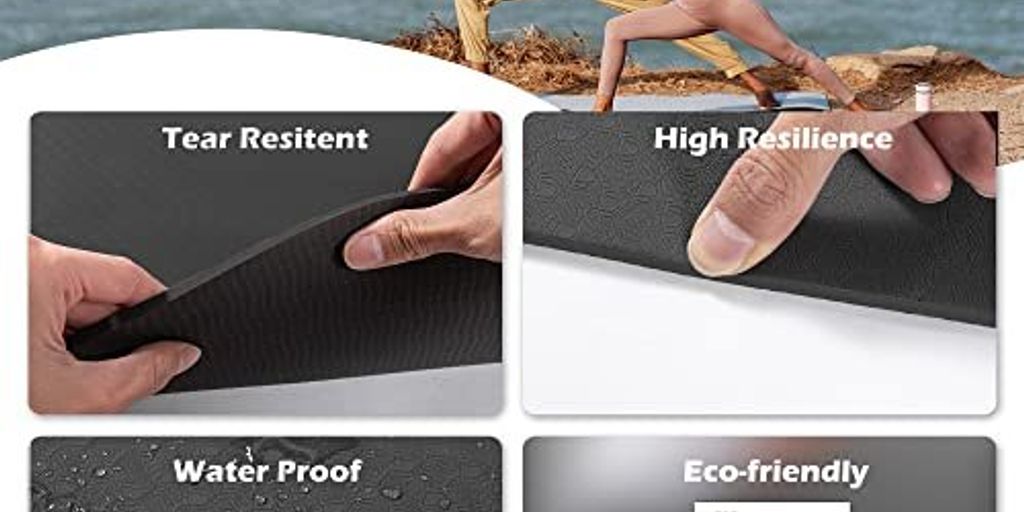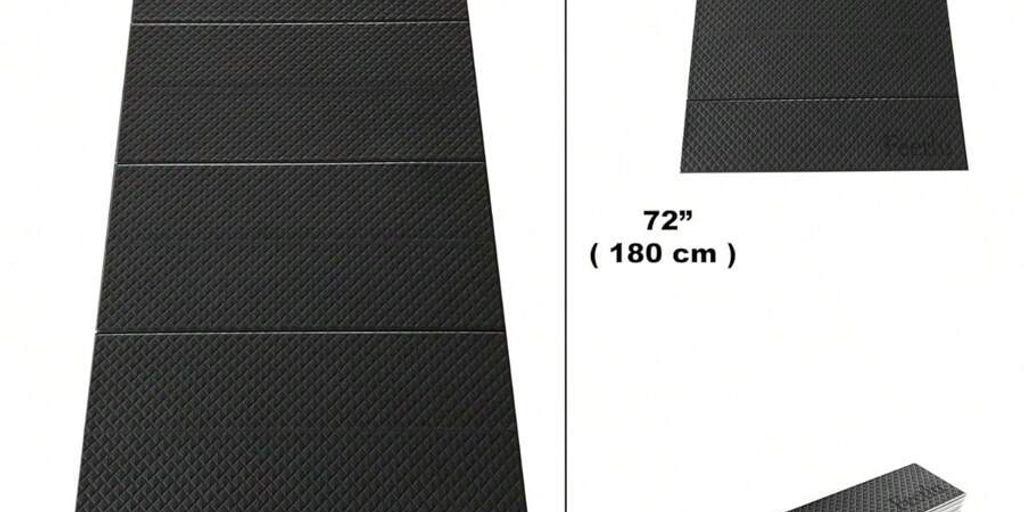
How to Prevent Slipping on Your Yoga Mat: Tips and Tricks
Slipping on your yoga mat can be really annoying and sometimes even dangerous. But don't worry, there are lots of ways to make sure you stay safe and steady during your practice. This article will give you tips and tricks to keep from slipping, so you can focus on your poses and enjoy your yoga time.
Key Takeaways
- Pick the right yoga mat based on its material, thickness, and texture.
- Clean and store your mat properly to keep it in good shape.
- Use yoga towels, sprays, and other accessories to improve grip.
- Focus on your hand and foot placement and engage your core during poses.
- Pay attention to environmental factors like temperature and the surface under your mat.
Choosing the Right Yoga Mat
Material Matters
The material of your yoga mat can greatly affect your practice. Natural rubber mats offer excellent grip and are eco-friendly, but they can be heavier. PVC mats are lighter and provide good cushioning, but they are not as environmentally friendly. Consider what matters most to you: grip, weight, or sustainability.
Thickness and Texture
The thickness and texture of your mat can also impact your stability. Thicker mats provide more cushioning, which is great for joint support, but they might make balancing poses harder. Thinner mats offer better stability but less comfort. Textured mats can help prevent slipping by providing extra grip.
Eco-Friendly Options
If being kind to the planet is important to you, look for mats made from natural or recycled materials. Cork and jute mats are great eco-friendly options. They are biodegradable and provide good grip. Keep in mind that these mats might require more care to maintain their quality.
Proper Mat Maintenance
Regular Cleaning
To prevent slipping on your yoga mat, it's important to clean it regularly. Sweat and dirt can make your mat slippery. Use a gentle soap and water solution to wipe down your mat after each use. Let it air dry completely before rolling it up.
Storage Tips
Store your mat in a cool, dry place. Avoid leaving it in direct sunlight, as this can cause the material to break down faster. Rolling your mat loosely can also help it last longer.
When to Replace Your Mat
Even with good care, yoga mats wear out over time. If you notice your mat is losing its grip or starting to tear, it might be time for a new one. A worn-out mat can make it harder to keep your balance and stay safe during your practice.
Taking care of your yoga mat not only helps it last longer but also keeps your practice safe and enjoyable.
Using Yoga Towels and Accessories
Benefits of Yoga Towels
Yoga towels are a great addition to your practice. They help keep you from slipping by soaking up sweat. The original and the best towels, like the yogitoes® yoga mat towel - manduka, offer superior grip for a zero-slip ride. These towels often come in bright, fun prints that can make your practice more enjoyable.
Grip Enhancing Sprays
Grip sprays can be a lifesaver if you have trouble with slipping. Just spray a little on your mat or hands before you start. This can make a big difference in how steady you feel during poses. Some sprays are made with natural ingredients, so they are safe for your skin and the environment.
Non-Slip Socks and Gloves
Non-slip socks and gloves are another way to keep from slipping. They have special grips on the bottom that help you stay in place. These are especially useful if you practice in a cooler room where your mat might not be as sticky. They can also keep your hands and feet warm during your practice.
Adding the right accessories to your yoga routine can make a big difference in your comfort and safety. Try out different options to see what works best for you.
Improving Your Technique
Hand and Foot Placement
Proper hand and foot placement is crucial for maintaining stability on your yoga mat. Ensure your hands are spread wide and press firmly into the mat to create a strong base. Similarly, your feet should be grounded, with toes spread out to enhance grip.
Engaging Your Core
Engaging your core muscles can significantly improve your balance and prevent slipping. By tightening your abdominal muscles, you create a stable center of gravity, which helps in maintaining poses without sliding.
Mindful Movements
Practicing mindful movements can also reduce the risk of slipping. Move slowly and with intention, paying attention to how your body interacts with the mat. This awareness can help you adjust your posture and grip as needed.
Remember, the non-slip surface prevents any slipping or sliding, even during intense workouts. Portability and ease of use make it perfect for on-the-go practice.
Environmental Factors
Temperature and Humidity
The temperature and humidity of your practice space can greatly affect your yoga mat's grip. High humidity can make your mat slippery due to sweat and moisture. On the other hand, a very dry environment might cause your mat to lose its stickiness. Aim for a balanced environment to keep your mat in top condition.
Surface Under the Mat
The type of surface you place your mat on can also impact its grip. A smooth, hard floor is ideal, while a carpeted or uneven surface can cause your mat to shift. Make sure to practice on a stable and flat surface to prevent slipping.
Lighting and Ambiance
Believe it or not, the lighting and ambiance of your practice space can influence your yoga session. Soft lighting and a calm atmosphere can help you focus better, reducing the chances of slipping. Create a serene environment to enhance your practice and maintain better grip on your mat.
Remember, the right environment can make a big difference in your yoga practice. Pay attention to these factors to improve your grip and prevent slipping.
DIY Solutions for Better Grip
Homemade Grip Sprays
Creating your own grip spray is easy and cost-effective. Mix water and a few drops of essential oil in a spray bottle. Shake well and lightly mist your mat before practice. This can help you stay steady during poses.
Using Household Items
You can use items you already have at home to improve your mat's grip. For example, sprinkle a bit of sea salt on your mat and rub it in gently. This can create a slightly rougher surface, making it less slippery.
Creating a Textured Surface
If your mat is too smooth, you can add texture to it. Use a clean, dry cloth to rub the surface of your mat. This can help to create tiny grooves that improve grip.
Sometimes, the simplest solutions are the most effective. A little creativity can go a long way in making your yoga practice safer and more enjoyable.
Looking to improve your grip during yoga sessions? Check out our DIY solutions for better grip! From simple home remedies to easy-to-follow tips, we've got you covered. For more detailed guides and product recommendations, visit our website today!
Conclusion
In summary, keeping your yoga mat slip-free is all about the right choices and habits. From picking the right mat to keeping it clean and dry, each step helps you stay safe and focused during your practice. Remember, a little extra care can make a big difference. So, try out these tips and tricks, and enjoy a safer, more enjoyable yoga experience.
Frequently Asked Questions
What should I look for in a yoga mat to prevent slipping?
You should choose a mat made from non-slip materials and with a good texture. Also, consider the thickness of the mat for better grip.
How often should I clean my yoga mat?
It's best to clean your yoga mat after every use to remove sweat and dirt. This helps maintain its grip and extends its life.
Can I use a regular towel instead of a yoga towel?
A yoga towel is designed to be non-slip and absorbent, which makes it better than a regular towel for yoga practice.
What are some DIY solutions to improve my mat's grip?
You can make homemade grip sprays using water and a few drops of essential oils. You can also use household items like baking soda to increase grip.
How do environmental factors affect my yoga practice?
Temperature, humidity, and the surface under your mat can affect your grip. Practicing in a cool, dry place with a firm surface is ideal.
When should I replace my yoga mat?
Replace your mat when it starts to wear out, loses its grip, or shows signs of damage. This ensures you have a safe and effective practice.


